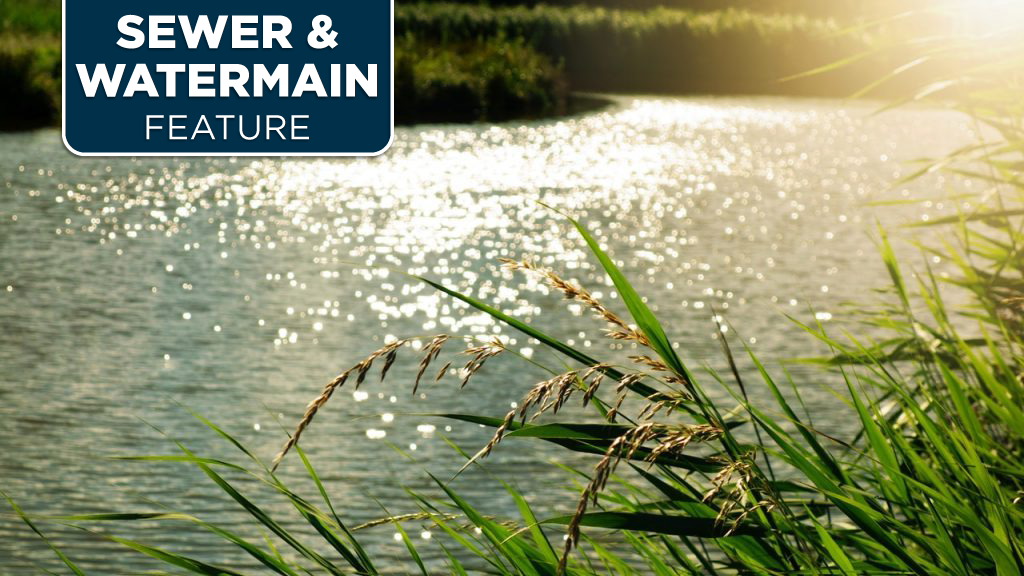Hints the province will shelve a $715 million Upper York Sewage Solution (UYSS) has cast a shadow over the $40 million storm water capture and treatment plant just announced with federal funding for Holland Marsh.
The irony is that both projects have the same goal, to reduce phosphorous run off from fertilizers used in the lush agricultural lands of Holland Marsh polluting Lake Simcoe.
For decades the run off of phosphorus from fertilizer used on farms around Lake Simcoe and Holland Marsh has created headaches in the area.
Last November the federal government made a breathless announcement of a $16 million through the Disaster Mitigation and Adaptation Fund (DMAF) and York Region was expected to divert $24 million to the project as part of the overall phosphorous elimination commitment related to the UYSS.
“The Holland Marsh is a 25 square kilometre agricultural area but the runoff from fertilizers enters into the canals and then the Holland River which drains into Lake Simcoe,” says Mike Rabeau, York’s Director of Capital Planning and Delivery for Environmental Services. The upshot is that there’s an abundance of phosphate in the water and in turn spurs too much plant growth which sucks up all the oxygen in the water, depriving other plants and wildlife like fish necessary to maintain a healthy water way.
He says for years the Lake Simcoe Region Conservation Authority has calculated about six tonnes of phosphorus are pouring into the lake and putting the entire Lake Simcoe Watershed at risk of eutrophication — the process of oxygen deprivation.
In December Georgina Council, citing concerns from Georgina Island First Nation over what they claim is “inadequate consultation,” voted against the project.
It would provide water treatment for 150,000 new homes in the area but Georgina also isn’t happy with the provincial growth targets the area and this is one way to put the brakes on those plans.
York has already spent $100 million on studies and assessments but opponents want York to dump their problem down a southern pipeline to Durham Region’s Duffin Creek plant which flushes into Lake Ontario. That was the original plan but the UYSS project had originally come about when the province insisted that York need to find a local solution to a local problem.
“Normally this is not part of our business,” he says, “we would not be involved but because we are a waste water and water treatment business.”
It happens anywhere there are large bodies of water surrounded by farming, he says, and is called non-point source contamination.
“It’s not coming from an outfall so you can’t single it out as the source of the pollution,” he says, and the agricultural operations are too important in terms of jobs and food to shut down.
York environmental services was peripherally involved in some of the discussions over the years because at one time it was thought that their treatment plants were a significant source of phosphorous being discharged into the lake.
However, he says, over the years many upgrades and adjustments have been made the plants discharge less than three per cent of the phosphorous going into the watershed.
“We get some bad press but we have done all we can do,” he says and notes in 2014 York proposed the Upper York Sewage Solutions which would be the first municipality in Canada to adopt leading-edge microfiltration and reverse-osmosis wastewater treatment technology with purified, clean water going into the East Holland River.
The plan is to build a Water Reclamation Centre in the Town of East Gwillimbury and implement at a Total Phosphorus Off-setting Program to further remove phosphorus from other sources within the Lake Simcoe watershed by retrofitting several existing stormwater with low-impact development technologies to remove three kilograms of phosphorus for every one kilogram of additional phosphorus the Water Reclamation Centre discharges to the watershed above a threshold of 124 kilograms per year.
That apparently isn’t good opponents in York Region. UYSS has been waiting since 2014 for approval with funding in place and some of that funding was going to pay for the storm water capture and treatment plant, says Rabeau.
However, that project can’t proceed until the UYSS fate is decided.
If it is killed the province needs to permit diversion of those funds for the storm water run off plan.
Engineering for the storm water facility hasn’t been done but in general terms it would be divert water from the canal to settling ponds where chemical treatment would extract phosphorous to be resold commercially.
It’s a Catch-22 situation for York Region which is now waiting to see which way that decision goes and is no further ahead than it has been since 2014.



Recent Comments